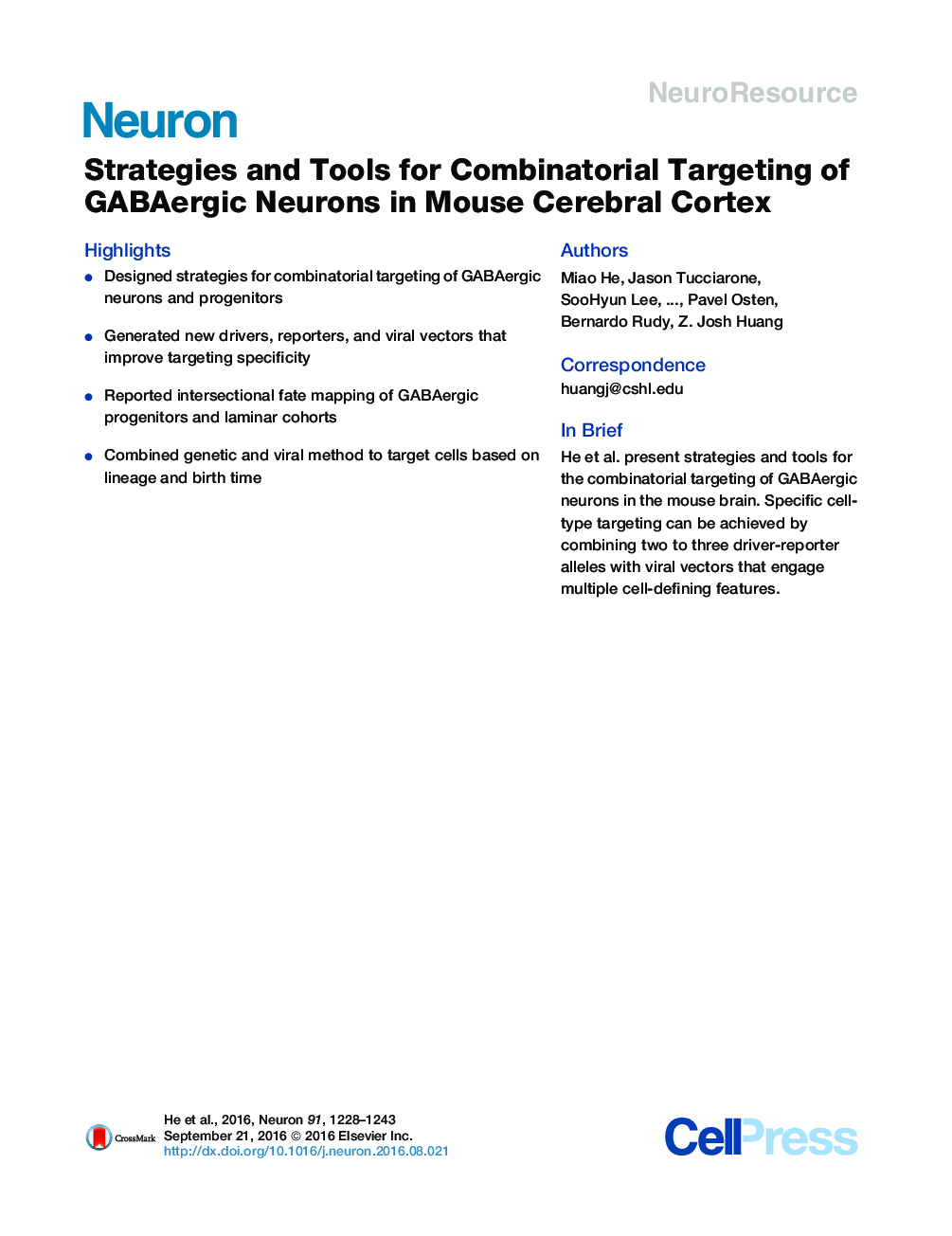| Article ID | Journal | Published Year | Pages | File Type |
|---|---|---|---|---|
| 4320631 | Neuron | 2016 | 16 Pages |
•Designed strategies for combinatorial targeting of GABAergic neurons and progenitors•Generated new drivers, reporters, and viral vectors that improve targeting specificity•Reported intersectional fate mapping of GABAergic progenitors and laminar cohorts•Combined genetic and viral method to target cells based on lineage and birth time
SummarySystematic genetic access to GABAergic cell types will facilitate studying the function and development of inhibitory circuitry. However, single gene-driven recombinase lines mark relatively broad and heterogeneous cell populations. Although intersectional approaches improve precision, it remains unclear whether they can capture cell types defined by multiple features. Here we demonstrate that combinatorial genetic and viral approaches target restricted GABAergic subpopulations and cell types characterized by distinct laminar location, morphology, axonal projection, and electrophysiological properties. Intersectional embryonic transcription factor drivers allow finer fate mapping of progenitor pools that give rise to distinct GABAergic populations, including laminar cohorts. Conversion of progenitor fate restriction signals to constitutive recombinase expression enables viral targeting of cell types based on their lineage and birth time. Properly designed intersection, subtraction, conversion, and multi-color reporters enhance the precision and versatility of drivers and viral vectors. These strategies and tools will facilitate studying GABAergic neurons throughout the mouse brain.Video Abstract To view the video inline, enable JavaScript on your browser. However, you can download and view the video by clicking on the icon belowHelp with MP4 filesOptionsDownload video (51942 K)
